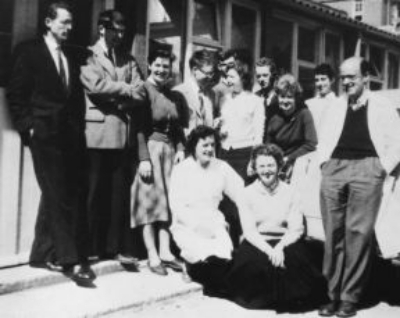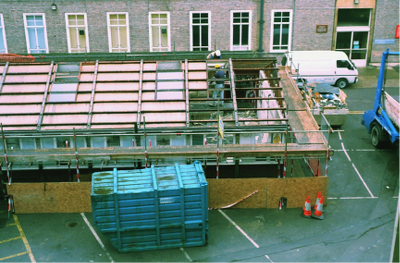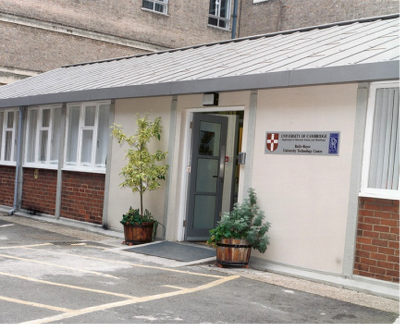Introduction
The Rolls-Royce University Technology Centre (UTC) at the University of Cambridge was established in 1994 as the result of an agreement with Rolls-Royce. The UTC was originally accommodated in the Arup and Austin buildings of the Department of Materials Science and Metallurgy before the 'Metallurgy hut' was completely refurbished to house the UTC in 1996. In July 2013, the UTC moved with the rest of the Department to a purpose built new building on the West Cambridge Site.
Foundation of the Rolls-Royce UTC
The foundation of the Rolls-Royce UTC was descried in article published in Materials World, December 1994:
Rolls-Royce invests £1.5 million in aerospace materials
A new technology centre has opened at Cambridge University to support the development of the next generation of nickel-based alloys and high temperature materials.
Rolls-Royce is funding the centre with an initial commitment of £1.25 million over five years; additional funding from government and EC sources is also envisaged.
The new centre is based in Cambridge University's Department of Materials Science and Metallurgy. It was opened at a special ceremony by Rolls-Royce's Director of Component Engineering, Frank Litchfield.
Nickel-based alloys are used for components such as turbine blades, discs and nozzel guide vanes which must operate in the hottest parts of the engine, where metal temperatures reach up to 1200°C.
New alloys typically take ten years and many millions of pounds to develop for operational components. One of today's new developments, RR1000, will result in the production of discs displaying step-change improvements in temperature capability by the turn of the century. Mr Litchfield explained: `Next generation alloys will have to be available for in-service operation in a much shorter timescale. Aircraft makers are producing aircraft within three years of concept; they expect engine makers to match this performance. Supporting technologies, including materials, need to be available `off the shelf' for new engine developments'.
Cambridge University's Materials Science department was chosen owing to its proven record in valuable materials research.
The centre will develop quantitative models for the performance of nickel-base superalloys and future high temperature materials such as aluminides. The modelling will investigate the relationship between composition, processing and properties of materials, which will be used to predict and optimise service behaviour. Rolls-Royce expects to make tremendous savings in time and money which was previously spent on experimentation and testing of new materials.
History of the 'hut'
For many years the UTC was housed in the 'hut' on the New Museum's site. An unassuming little building with an interesting history.
In the late 1940s, in response to a lack of research space in the department at that time, permission was obtained from the University to build a one-storey hut alongside the Austin wing of the Cavendish physics laboratories. 'The hut' provided the department with an additional 2000 square feet of dedicated space for metallurgical research and offices, increasing the physical size of the department by about a third.
As time progressed more dramatic expansion was required, and the acquisition of substantial facilities in the Arup building resulted in the 'hut' becoming vacated. The 'hut' saw use for a period as the home to facilities for the Laboratory of Molecular Biology (LMB).

Photograph of Max Perutz and LMB research staff outside the front of the 'hut'.
In 1962 the LMB moved to a dedicated building on the Cambridge Addenbrooke's site and for many of the years, until the 1990s, the 'hut' was reduced to life as a cycle shed.
With the inception of the Rolls-Royce UTC in 1994, the 'hut' was refurbished to house the majority of its activities. It opened again in 1996 and accommodated the UTC until the Department of Materials Science and Metallurgy moved to the West Cambridge site in 2013.

The 'hut' under refurbishment to become the UTC building

Photograph of the refurbished UTC building

